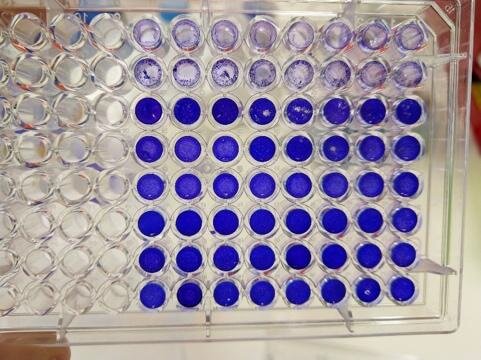Researchers used RNA sequencing of individual cells to characterize the ways in which the corona virus spreads in the cells of the body, and in the general population

The corona virus, COVID-19, has reached all the continents of the world (except Antarctica). The ways of its transmission from person to person are apparently similar to those of any virus: droplets containing its particles travel up to a distance of about two meters. The virus particles are released into the air when the carrier coughs, sneezes or talks and the healthy person inhales them or their muscles come into contact with them. In addition, if he touches a surface contaminated with virus particles and then his nose, mouth, or face - he can become infected. The virus may also be found in non-respiratory body fluids such as feces, blood and semen, but their role in its transmission is unclear and they probably do not constitute a significant means of infection. A carrier, or a patient, can infect people even before symptoms appear, and at the beginning of the disease this ability reaches its peak.
What is the question? How does the corona virus infect the body's cells and multiply inside them?
Dr. Yotam Dreyer and Dr. Oren Farnes from the Faculty of Medicine at the Hebrew University of Jerusalem, with the help of a grant from the National Science Foundation, researched the biology of infection with the corona virus in response to its outbreak in Israel and around the world. Normally, Dr. Dreyer's lab deals with the connection between epigenetic changes (in the expression of genes and their function) and diseases, especially cancer, and Dr. Oren Farnes' lab deals with the immune system, examining the functions of cells and their dealings with bacteria, viruses and cancer. With the outbreak of the corona crisis, researchers mobilized and used the tools at their disposal to investigate the virus and even developed an array of corona tests. In the end, their goal was to find ways to prevent its spread, to categorize patients according to the level of risk for serious disease and to develop effective treatments. Cells that the researchers infected with corona (a weaker color indicates that they were destroyed due to the infection)
"The more we delved into the study of the biology of the corona infection, we realized that we could use our research tool: RNA sequencing (a method that detects changes in gene expression) of individual cells infected with the virus. This is how we saw how the virus affects the genome in different types of cells (which genes change), which biological processes it causes to reproduce and the immune system's response to this. In addition, we compared the infected cells to healthy cells to understand how the gene control changed following the penetration of the virus - something we routinely do in cancer research," Dr. Dreyer explains.
First, the researchers examined cells infected with an engineered virus whose infection mechanism is similar to that of the corona virus. Over time, we characterized information that came from other laboratories that examined cells taken from corona patients and model animals (monkeys) infected with the virus. They quantified and deciphered changes in biological processes in individual cells, and thus discovered, among other things, that the virus encourages the adhesion of cells to each other, in order to move from cell to cell and infect more and more cells by activating protein signaling pathways. According to Dr. Dreyer: "In fact, the virus does not require the receptor expression of the cells to penetrate them, and encourages them to allow it to do so."
In addition, the researchers discovered that the virus disrupts its operation and reduces the amount of the WT1 protein - which is responsible for controlling gene expression and protein transcription. Thus the control over genes, some of which are related to signaling pathways whose role is to support the life cycle of the virus, is reduced, in its ability to infect and multiply. They also discovered that the virus causes glycolysis in the cells - a metabolic pathway in which a glucose molecule is broken down into two pyruvate molecules, which is used to produce energy. That is, the virus changes the cellular metabolism in a way that helps it reproduce.
The researchers discovered that the virus disrupts its operation and reduces the amount of the WT1 protein - which is responsible for controlling gene expression and protein transcription. Thus the control of genes, some of which are related to signaling pathways whose role is to support the life cycle of the virus, is reduced.
Today, researchers are using additional genetic methods to better understand how the cells express the proteins that mediate the entry of the virus into the body. Damage to these proteins with the help of drugs can limit its entry and reproduction. "Ultimately, the research allowed us to systematically and systematically characterize the biological processes that change due to infection with the virus. In the following studies, we would like to use similar methods to study other viruses and other diseases such as cancer", concludes Dr. Dreyer.
More of the topic in Hayadan:
- breaking point
- A new study examines the impact of stressful situations and trauma on adults aged 65 and over
- We identified the brain activity of the subconscious
- A biological system with a light switch
- A team of international researchers succeeded for the first time in characterizing the first galaxies in the universe - only about 200 million years after the Big Bang
